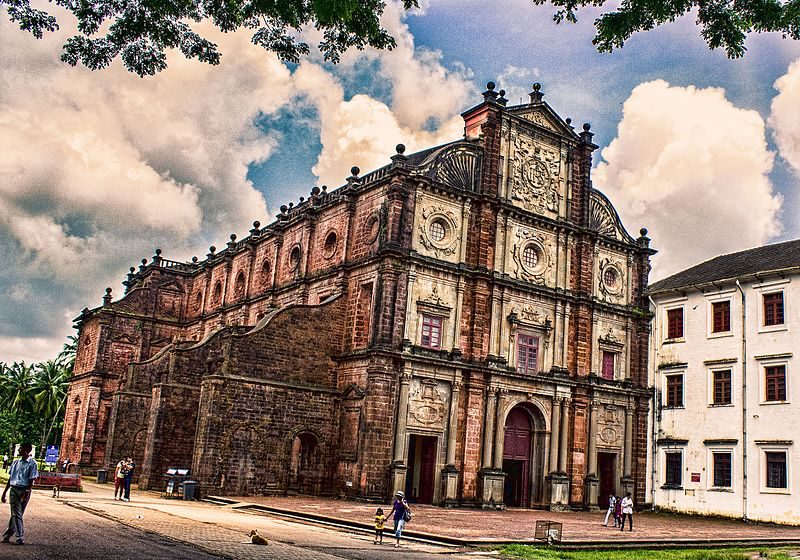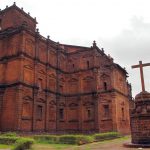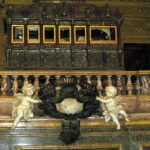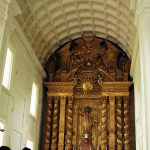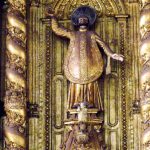The Basilica of Bom Jesus or Borea Jezuchi Bajilika is located in Goa, India, and is a UNESCO World Heritage Site. The basilica holds the mortal remains of St. Francis Xavier.
The church is located in Old Goa, which was the capital of Goa in the early days of Portuguese rules.
‘Bom Jesus’ is the name used for the Ecce Homo in the countries of Portuguese colonization. The Jesuit church is India‚s first minor basilica, and is considered to be one of the best examples of baroque architecture in India.
Famous throughout the Roman Catholic world, the imposing Basilica of Bom Jesus contains the tomb and mortal remains of St Francis Xavier, the so-called Apostle of the Indies. St Francis Xavier‚s missionary voyages throughout the East became legendary. His ‚incorrupt‚ body is in the mausoleum to the right, in a glass-sided coffin amid a shower of gilt stars. Freelance guides at the entrance will show you around for 100.
Construction on the basilica began in 1594 and was completed in 1605, to create an elaborate late-Renaissance structure, fronted by a facade combining elements of Doric, Ionic and Corinthian design. Prominent in the design of the facade is the intricately carved central rectangular pediment, embellished with the Jesuit emblem ‚IHS,‚ an abbreviation of the Latin ‚Iesus Hominum Salvator‚ (Jesus, Saviour of Men).
Inside, the basilica‚s layout is simple but grand, contained beneath a simple wooden ceiling. The huge and ornate gilded reredos,stretching from floor to ceiling behind the altar, takes pride of place, its baroque ornament contrasting strongly with the classical, plain layout of the cathedral itself. It shows a rather portly St Ignatius Loyola, protecting a tiny figure of the infant Jesus. His eyes are raised to a huge gilded sun above his head, on which ‚IHS‚ is again emblazoned, above which is a representation of the Trinity.
To the right of the altar is the slightly grisly highlight for the vast majority of visitors: the body of St Francis Xavier himself. The body was moved into the church in 1622, and installed in its current mausoleum in 1698 courtesy of the last of the Medicis, Cosimo III, Grand Duke of Tuscany, in exchange for the pillow on which St Francis‚ head had been resting. Cosimo engaged the Florentine sculptor Giovanni Batista Foggini to work on the three-tiered structure, constructed of jasper and marble, flanked with stars, and adorned with bronze plaques that depict scenes from the saint‚s life. Topping it all off, and holding the shrivelled saint himself, is the casket, designed by Italian Jesuit Marcelo Mastrili and constructed by local silversmiths in 1659, whose sides were originally encrusted with precious stones which, over the centuries, have been picked off.

